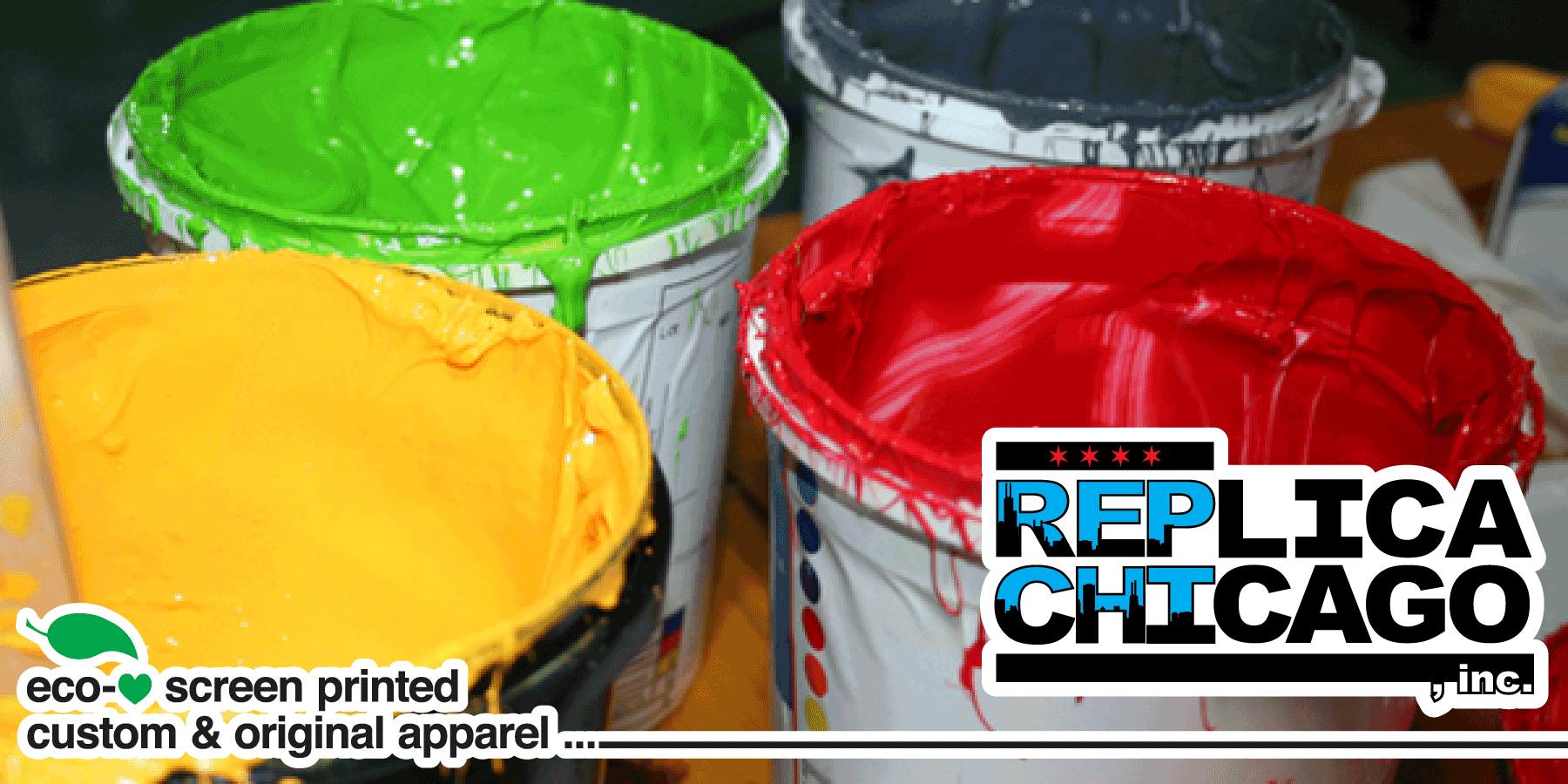Durable T-Shirt Printing for Everyday Wear
Durable T-Shirt Printing for Everyday Wear
Blog Article
Screen Printing Uncovered: Every Little Thing You Required to Find Out About Tee Shirt and Garment Printing Strategies
If you have actually ever before questioned just how those dynamic layouts wind up on your favorite t-shirts, you remain in the right place. Screen printing is a fascinating method that combines art with method, using limitless opportunities for creativity. Comprehending the basics, from devices to ink options, can significantly affect your results. Prepared to explore the important aspects that make screen printing an art form? Allow's reveal the details that can elevate your jobs.
The Fundamentals of Display Printing: How It Works
When you dive into screen printing, you'll uncover it's both a science and an art. At its core, display printing entails producing a stencil, or display, that enables ink to pass through only in certain areas.
Next, you'll blend your inks and prepare your printing surface. Setting the display over the fabric, after that use a squeegee to press ink through the display onto the garment. This process calls for accuracy, as you want clear, vibrant prints. After printing, you'll heal the ink with warmth, guaranteeing it sticks to the textile and lasts through laundries. Each action is essential, and understanding them will boost your screen printing abilities, transforming easy garments into distinct, expressive pieces.
Sorts Of Display Printing Methods
When you grasp the essentials of display printing, it's time to check out the various techniques that can boost your styles. One popular approach is traditional display printing, where ink is pressed via a stenciled display. This method is excellent for bold, vivid shades. Then there's water-based ink printing, which provides a softer feeling and is environmentally friendly, but it needs a various approach to healing.
If you're going for fine details, think about discharge printing. This strategy gets rid of color from the fabric, leaving a soft, vintage look. Another alternative is plastisol printing, understood for its toughness and vivid colors, making it a favorite for lots of brand names. Ultimately, try out halftone printing to create slope impacts and detailed designs. Each method has its distinct charm, so do not think twice to try them bent on discover what fits your design best!
Vital Tools for Screen Printing
To attain sensational cause screen printing, having the appropriate devices is basic. First, you'll require a tough screen printing framework, which holds the mesh that moves your style onto the garment. Next, spend in premium mops; these are important for using ink evenly throughout the screen. You'll additionally require a great exposure device to create your displays, as well as a washout cubicle for cleansing them after use. A trustworthy heat resource, like a conveyor dryer or warmth press, is crucial for curing your prints to guarantee long life. Don't neglect a correct office, furnished with tables and storage for your products. Lastly, safety gear, such as gloves and masks, will certainly maintain you safe from chemicals and inks. With the right devices, you'll be well on your method to producing professional-quality prints.
Choosing the Right Inks and Materials
When choosing inks and products for display printing, you need to consider the type of ink that works finest for your job. Assume about material compatibility to assure your layouts look last and great lengthy. Also, explore environmentally friendly ink options to make your printing process much more lasting.
Types of Display Inks
Picking the best display ink is crucial for accomplishing vibrant, durable prints that fulfill your job's needs. There are several kinds of display inks to examine. Specialty inks, such as metal or glow-in-the-dark, can include special effects to your styles.

Fabric Compatibility Factors To Consider
Recognizing fabric compatibility is important for achieving premium display prints, particularly given that various materials respond distinctly to numerous inks. Constantly examine your inks on example textile to assure they adhere appropriately and keep shade integrity. Furthermore, keep in mind that fabric weight and texture can affect the last outcome, so choosing the appropriate ink and material combo is essential for your project's success.
Eco-Friendly Ink Options
Environment-friendly inks are coming to be a popular option for screen printers that desire to decrease their ecological impact while maintaining high quality. When picking inks, take into consideration water-based inks, which are much less hazardous and simpler to clean up compared to typical solvents. These inks bond well with fabrics, delivering dynamic outcomes without toxic chemicals. You might likewise check out eco-solvent inks that use fewer unstable organic substances (VOCs), making them a much safer alternative for both your health and the planet.
Furthermore, seek inks made from renewable energies, such as soy or vegetable-based choices. By choosing the right inks and materials, you'll not only produce stunning designs but additionally add to an extra lasting printing process. Make the button, and your prints will reflect your dedication to the environment!
Preparing Your Design for Display Printing

File Layout Needs
To assure your design looks vivid and sharp on material, you'll require to pay very close attention to submit layout needs for display printing. Beginning with vector data like AI or EPS, as they can be scaled without losing quality. If you make use of raster photos, choose high-resolution files, such as TIFF or PNG, preferably at 300 DPI. Prevent making use of JPEGs, as they can lose clarity when resized. Make certain your style has a transparent history to stop unwanted that site white edges on your prints. Keep color modes in mind; CMYK is basic for display printing, so transform your RGB creates appropriately - screen printing kit. By adhering to these guidelines, you'll establish your artwork up for a successful print.
Color Splitting Up Methods
Color separation is a vital step in preparing your design for display printing, and grasping it can significantly enhance your print quality. You'll require to damage your layout right into individual shades, as each shade needs a different screen during printing. This accuracy not only guarantees accurate shade depiction but likewise streamlines the printing procedure.
Resolution and Dimension
Accomplishing the ideal cause display printing starts with ensuring your layout has the best resolution and dimension. Ideally, your artwork needs to be at the very least 300 DPI (dots per inch) for sharp, clear prints. If you use lower resolution, your end product might look pixelated and amateur.
When it comes to size, take into consideration the measurements of your print area. Design your artwork to match the last print dimension, ideally creating it in the actual dimensions you'll be publishing. This way, you'll prevent any type of unanticipated scaling issues.
Always inspect your layout in both vector and raster layouts. Vector graphics can be scaled without losing high quality, making them perfect for display printing. Preparing appropriately will guarantee your layout looks fantastic on every garment!
Step-by-Step Screen Printing Process
Screen printing is a dynamic procedure that permits you to develop vibrant designs on various surfaces. To get going, you'll require a screen, emulsion, and your chosen ink. First, prepare your display by cleansing it thoroughly. Next off, apply the solution equally and let it dry in a dark area. Once completely dry, reveal your display to light with your layout put on it, which will certainly set the solution where the light hits, developing a pattern - screen printing kit.
After rinsing the unexposed More about the author solution, your screen prepares. Establish it up on your printing surface and straighten your garment under it. Put ink onto the screen and make use of a squeegee to push the ink through the stencil onto the material. Raise the screen thoroughly and allow the print completely dry. Ultimately, treat the ink utilizing heat to guarantee toughness. That's it! You have actually effectively screen published your style.
Tips for Effective Display Printing Projects
While you're diving into your screen printing projects, keep in mind that prep work is vital to success. Beginning by gathering all your materials-- inks, mops, garments, and displays. A clean work space assists prevent undesirable errors, so clean up before you start.
Next, validate your artwork is high-resolution and effectively sized for your garment. Examine your screen for correct exposure and tidy it thoroughly to avoid smudges. When blending your inks, adhere to the maker's standards to accomplish the appropriate uniformity.
Throughout printing, apply even pressure with your squeegee for regular outcomes. Don't hurry; take your time to confirm each print fulfills your criteria. After printing, let your garments dry entirely prior to dealing with or packaging them.
Last but not least, always keep an example of your help future reference. In this manner, you can analyze your progress and enhance your strategies over time. Delighted printing!

Regularly Asked Questions
How much time Does It Require To Establish a Display Printing Work?
Setting up a screen printing task commonly takes around thirty minutes to an hour. You'll prepare the screens, mix inks, and readjust the press. The time varies based upon intricacy and experience, so stay arranged!
Can I Print on Various Textile Enters Utilizing the Same Technique?
Yes, you can publish on various material types making use of published here the same strategy, yet you'll require to readjust your inks and setups. Some fabrics take in ink in different ways, so experimenting warranties the ideal results for every product.
What Prevail Mistakes to Stay Clear Of in Display Printing?
When screen printing, avoid usual blunders like utilizing the wrong ink, neglecting correct direct exposure times, or avoiding pre-press checks. Always check your arrangement and keep tidy screens to assure quality outcomes each time.
How Can I Properly Tidy and Maintain My Display Printing Equipment?
To effectively clean and keep your screen printing tools, you need to frequently clean displays with suitable solvents, inspect mops for wear, and guarantee all tools are kept completely dry and dust-free. Consistency stops costly repair work and boosts efficiency.
Is Screen Printing Eco-friendly Compared to Other Methods?
Screen printing can be much more eco-friendly than various other methods, specifically if you use eco-conscious products and water-based inks. By picking sustainable materials and techniques, you decrease waste and decrease your effect on the earth.
Screen Printing Uncovered: Every Little Thing You Need to Know Regarding Tee Shirt and Garment Printing Techniques
At its core, screen printing includes developing a stencil, or display, that allows ink to pass with only in details areas. Placement the display over the fabric, after that make use of a squeegee to push ink through the screen onto the garment. One preferred method is traditional display printing, where ink is pushed via a stenciled display.When selecting inks and materials for screen printing, you require to take right into account the kind of ink that functions ideal for your task.
Report this page